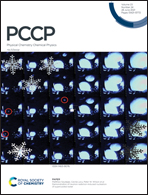Role of ultramicropores in the remarkable gas storage in hypercrosslinked polystyrene networks studied by positron annihilation†
Abstract
In this paper, hypercrosslinked polystyrene (HCLPS) networks were synthesized by radical bulk polymerization and Friedel–Crafts alkylation reactions using vinylbenzyl-co-divinylbenzene chloride (VBC-DVB) as the precursors. A series of HCLPS was prepared with varying content of DVB from 0 to 10% in the precursor. Both N2 adsorption and positron annihilation measurements reveal micropores in the HCLPS. Especially, the existence of ultramicropores with a size in the range of 0.63–0.7 nm is confirmed by positron lifetime measurements. With increasing DVB content from 0 to 10%, the number of ultramicropores shows a gradual increase. Both the H2 and CO2 adsorption capacity increase monotonously with the increase of the DVB content. With 10% DVB in the HCLPS, the H2 storage increases to 10.3 mmol g−1 (2.05 wt%) at 77 K and 1 bar and the CO2 capture reaches 2.81 mmol g−1 (12.4 wt%) at 273 K and 1 bar. The remarkable gas storage ability is ascribed to the existence of the ultramicropores, which result in a stronger affinity to the gas molecules. By using positrons as a new probe for the pores, our results provide convincing evidence of the role of ultramicropores in the gas adsorption performance in microporous organic polymers.



 Please wait while we load your content...
Please wait while we load your content...